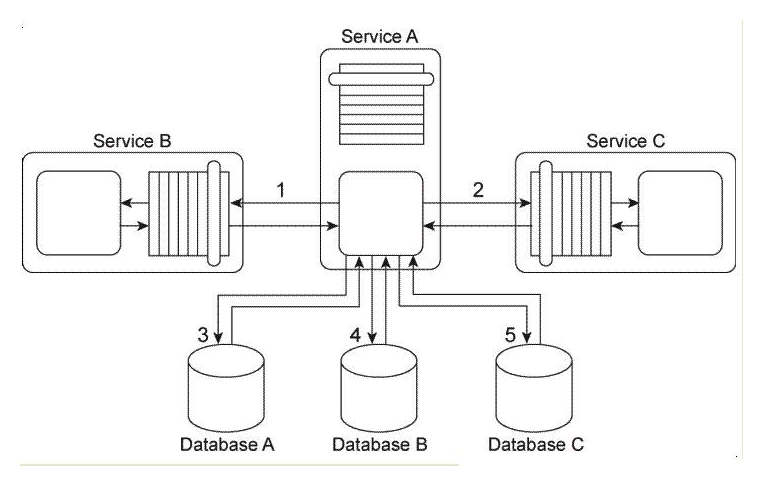Multiple Choice
You are told that in this service composition architecture, all four services are exchanging invoice-related data in an XML format. The services in Service Inventory A are standardized to use a specific XML schema for invoice data. Design standards were not applied to the service contracts used in Service Inventory B, which means that each service uses a different XML schema for the same kind of data. Database A and Database B can only accept data in the Comma Separated Value (CSV) format and therefore cannot accept XML formatted data. What steps can be taken to enable the planned data exchange between these four services? 
A) The Data Model Transformation pattern can be applied so that data model transformation logic is positioned between Service A and Service B, between Service A and Service C, and between Service C and Service D . The Data Format Transformation pattern can be applied so that data format transformation logic is positioned between the Service B logic and Database A and between the Service D logic and Database B.
B) The Data Model Transformation pattern can be applied so that data model transformation logic is positioned between Service A and Service C and between Service C and Service D . The Data Format Transformation pattern can be applied so that data format transformation logic is positioned between the Service B logic and Database A and between the Service D logic and Database B.
C) The Data Model Transformation pattern can be applied so that data model transformation logic is positioned between Service A and Service C . The Protocol Bridging pattern can be applied so that protocol bridging logic is positioned between Service A and Service B and between the Service C and Service D . The Data Format Transformation pattern can be applied so that data format transformation logic is positioned between the Service B logic and Database A and between the Service D logic and Database B.
D) None of the above.
Correct Answer:

Verified
Correct Answer:
Verified
Q14: Service A is a task service that
Q15: It has been confirmed that Policy A
Q16: Service Consumer A sends a message with
Q17: Service Consumer A sends a message to
Q18: Our service inventory contains the following three
Q19: Service Consumer A sends a message with
Q21: Services A, B, and C are non-agnostic
Q22: Service A is a task service that
Q23: Service Consumer A sends a message to
Q24: Service Consumer A invokes Service A (1).